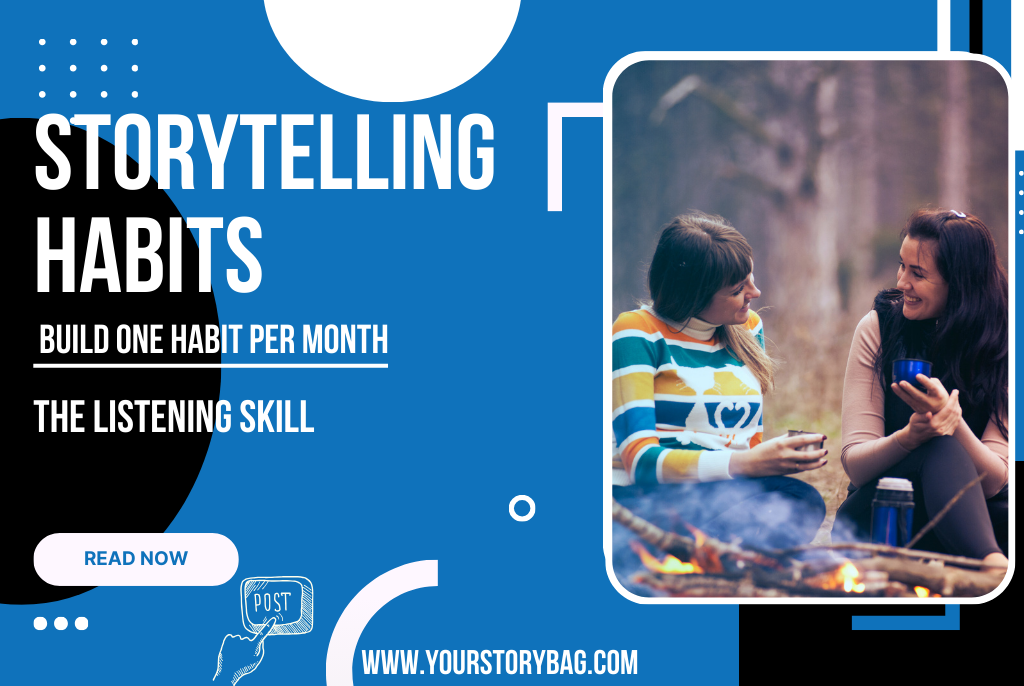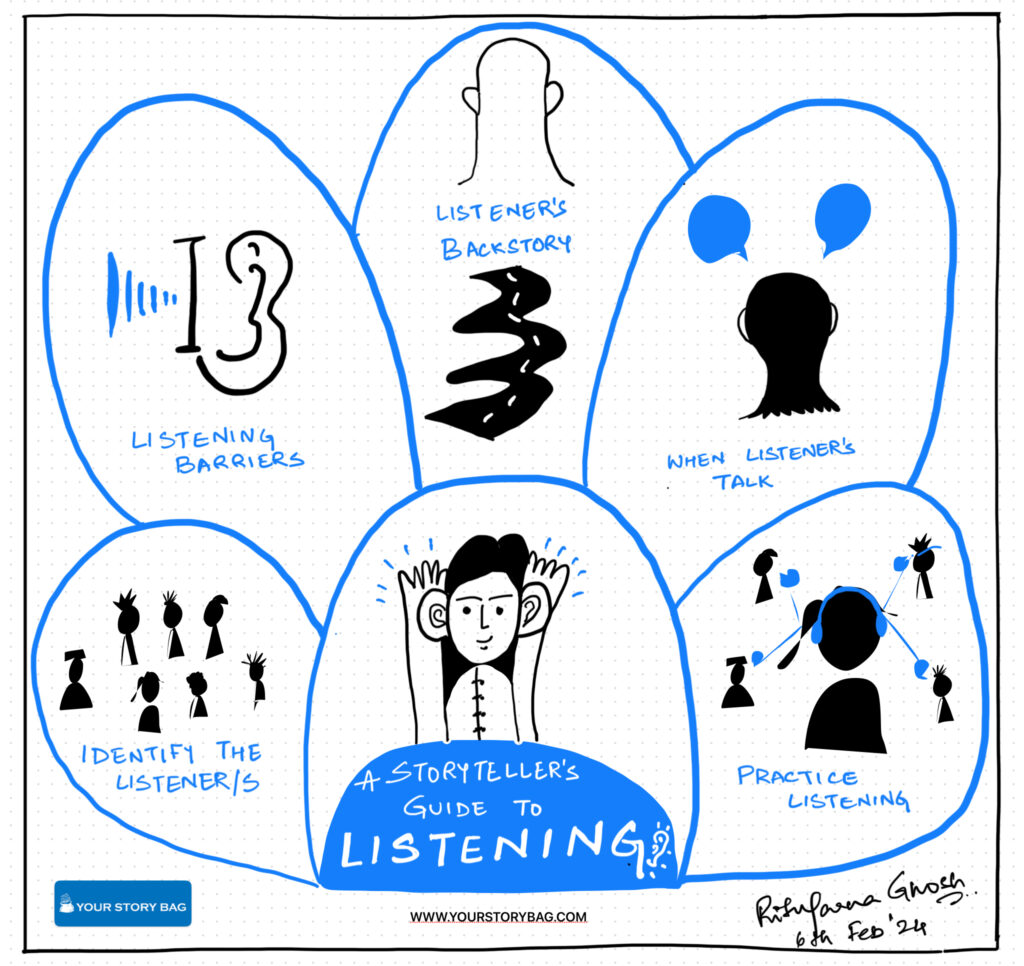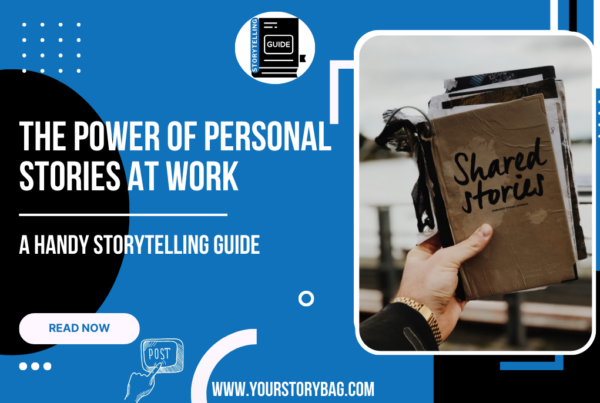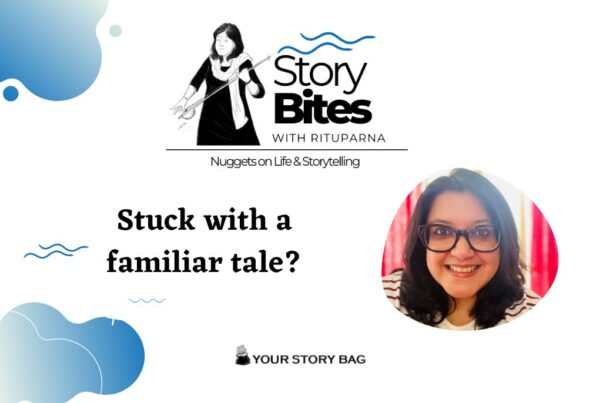
“Why Storytelling? Why now?” is a standard question that I begin most of my discovery calls with clients.
Instead of telling them what I do and how, I prefer listening. I always, and always, let a prospective client speak first.
I prefer to listen to their side of the story.
But that’s one half of the story. The challenge is to listen with intent, to dispel bias and prejudice, to restrict the straying of thoughts, resist the temptation to hijack the conversation and interrupt the conversation with a solution or suggestion.
As a service provider, a trainer, a coach, my biggest urge is to simplify the challenges of my prospective client and give them the solution as they tell me their problems. Yes, I struggle too. And so I have to constantly remind myself to listen to my client, find what they are dealing with, what are they looking for, what are the qualities that will help me pitch better, and most importantly how to build a relationship.
As an oral storyteller working with diverse sets of listeners, I value listening more than telling. This may come as a surprise to all of you, but the first skill that I recommend storytellers develop is deep listening & observation skills. You cannot do one without the other. Listening builds empathy, and if you build your listening skills, it shows that you really care for those who you expect to listen to you.
Unfortunately, most people want to become Storytellers, the one having something to tell, rather be the one listening. Many tellers have never really listened to a storyteller. They may have seen & heard them, but they have never truly listened to them. We know there is a difference between listening & hearing, right?
Imagine a storyteller in any gathering, a social event, a boardroom meeting, a town hall event, a client / investor pitch, a company offsite, a formal talk, a seminar or a presentation. A story can fit into any of these events. If you are a business leader / a professional preparing to tell a story, look at developing listening skills. And it begins by learning about your listener.
 Here is a storyteller’s guide to develop listening skills:
Here is a storyteller’s guide to develop listening skills:
- Listeners – Before you tell a story, any story, identify & classify you listener really well. Whether you look at your listeners as a homogeneous group, or a set of individuals, people you know very well, or people who are complete strangers, matter. Your familiarity and past relationship / association with them matters, as does your chance of building connections with a new audience. Would you be more confident of telling stories who know and trust you? Or would you rather tell to those who don’t know who are you? As a storyteller, I would recommend spend time classifying your listener and remember to do it without prejudice or bias.
- Listener’s Backstory – Once you have your listener’s classify, spend a second layer of thought to know a little more about them. Who are the listeners, where are they coming from, and what are they expecting from you? Identify their ‘needs’ so you can give them the story that they are looking for. Every time I am invited to tell a story, conduct a training, I do an audit with the participants to know WHO are they? What do they want to learn? I give them a chance to share their challenges and wants.
- Listening Barriers – Before you speak, listen. Listen to your listeners and identify their listening barriers. What are the things / factors that are impacting their listening journeys? Past experiences, biases, prejudices, counter-narratives in their mind, distractions of the mind, body or environment can all become barriers. A simple conversation with the listener will tell you WHAT are the listening barriers.
- When Listener’s Talk – I like to call myself the ‘fly on the wall’. I enjoy listening to people without them noticing me. I often spend time in coffee shops, market places, bookstores, networking events observing & listening to people. In workshops, I create moments that trigger conversations, so I can drop by a table, hop into a breakout room so I can listen to listener’s talk.
- Practice Listening – In most of my trainings I create an intimate listening experience where there is ONE teller & ONE listener. Sometimes I give them story prompts, at other time I give them the tools to identify a story worth telling. I give them a framework to observe themselves as the listener & teller while they also observe their partner’s listening & telling skills. These exercises have brought out valuable insights that have made people learn a lot about listening.
Listening is the first L in the ladder of Learning. Likewise it is an important link in the toolkit of a Storyteller. We all listen differently. All we need is an ‘intent to listen’.
Want to build a Storytelling Habit, begin by listening to someone tell a story today.
But wait, you have to learn to listen before that…
Want to know more about listeners & listener’s needs?
Look up ABC of Storytelling 2.0**, L for #Listening & #ListeningBarriers
Storytelling Habits is a year-long series where we share actionable steps to build ONE HABIT per month.
Here are the other Habits in the list:






